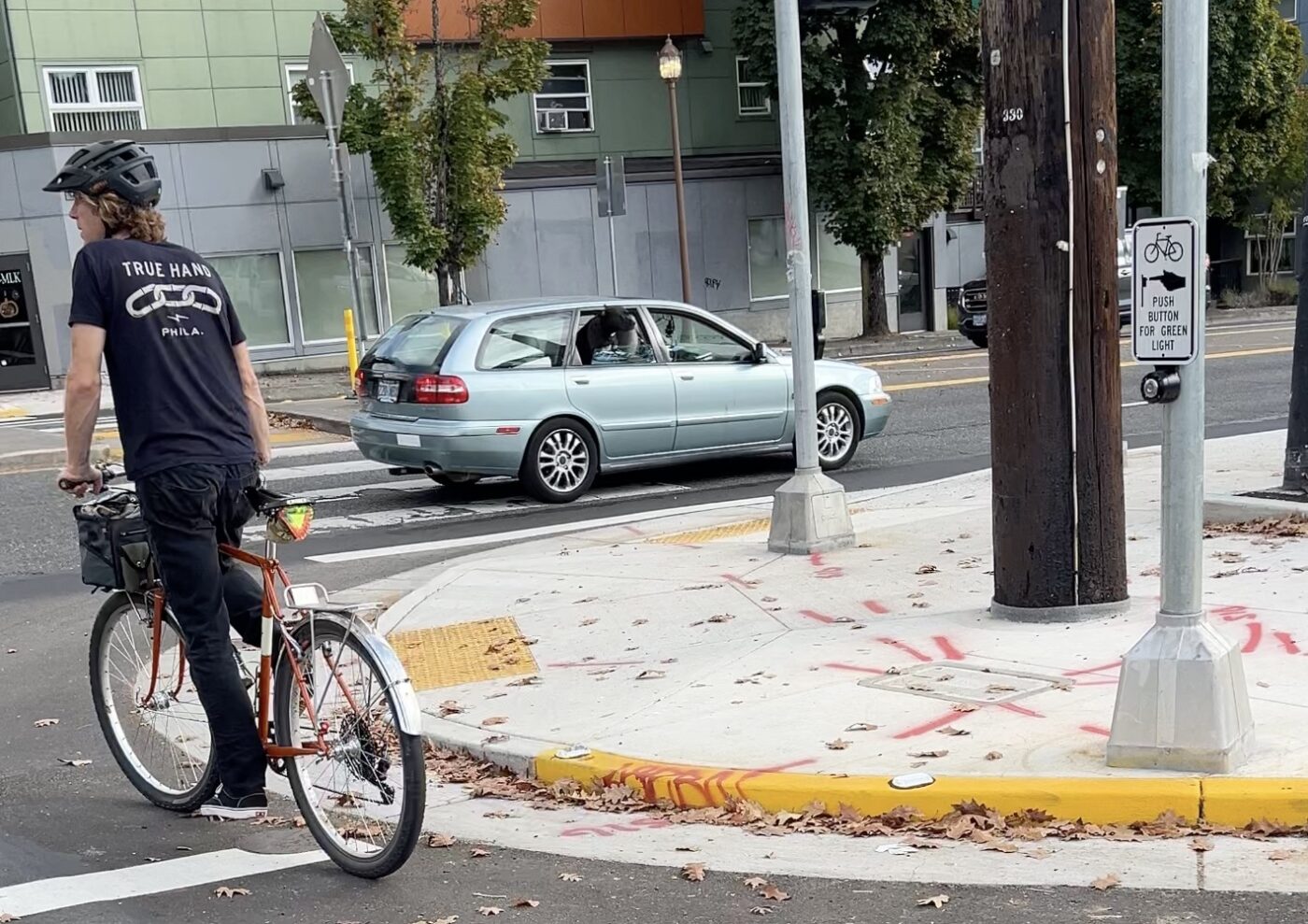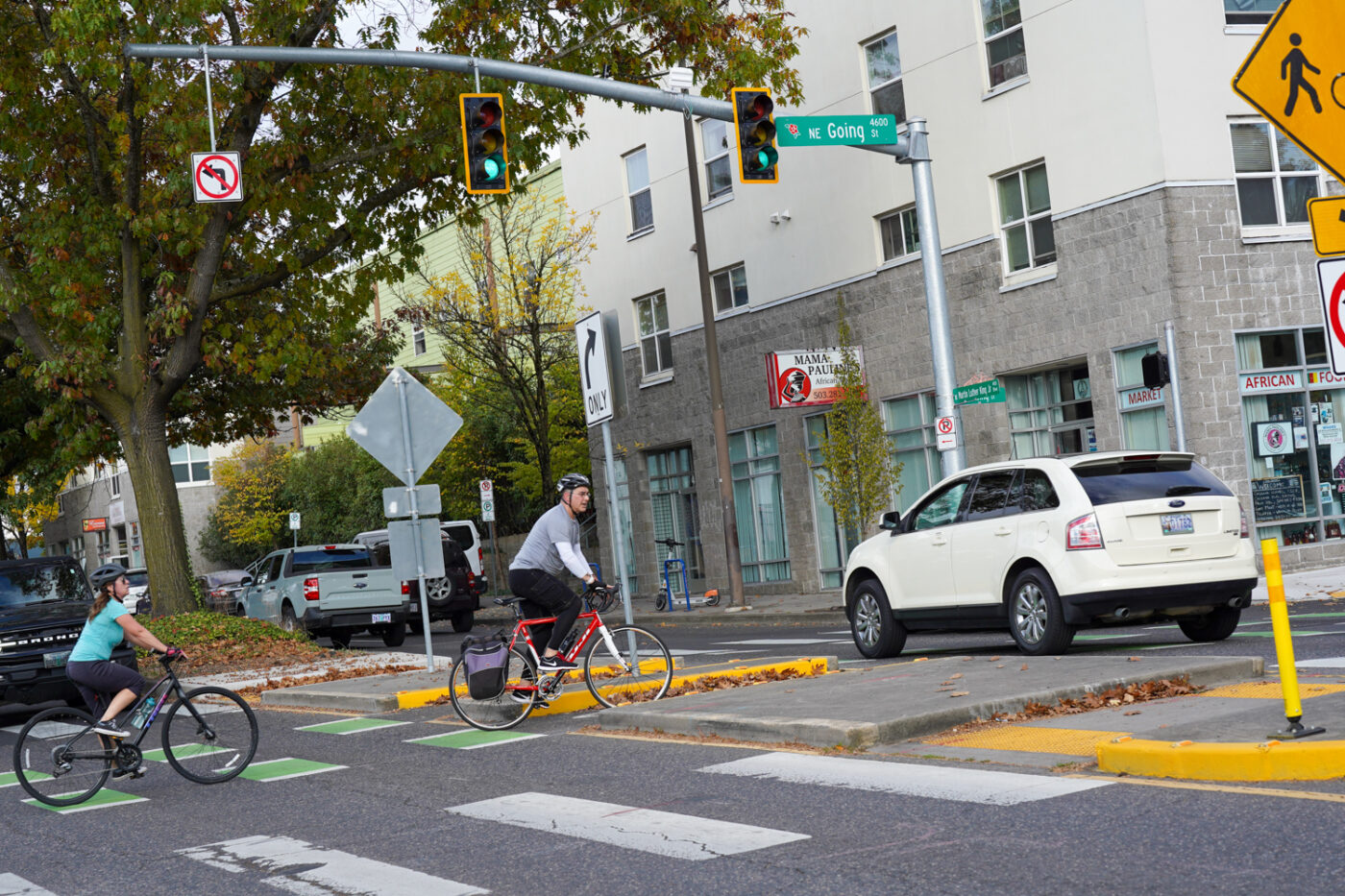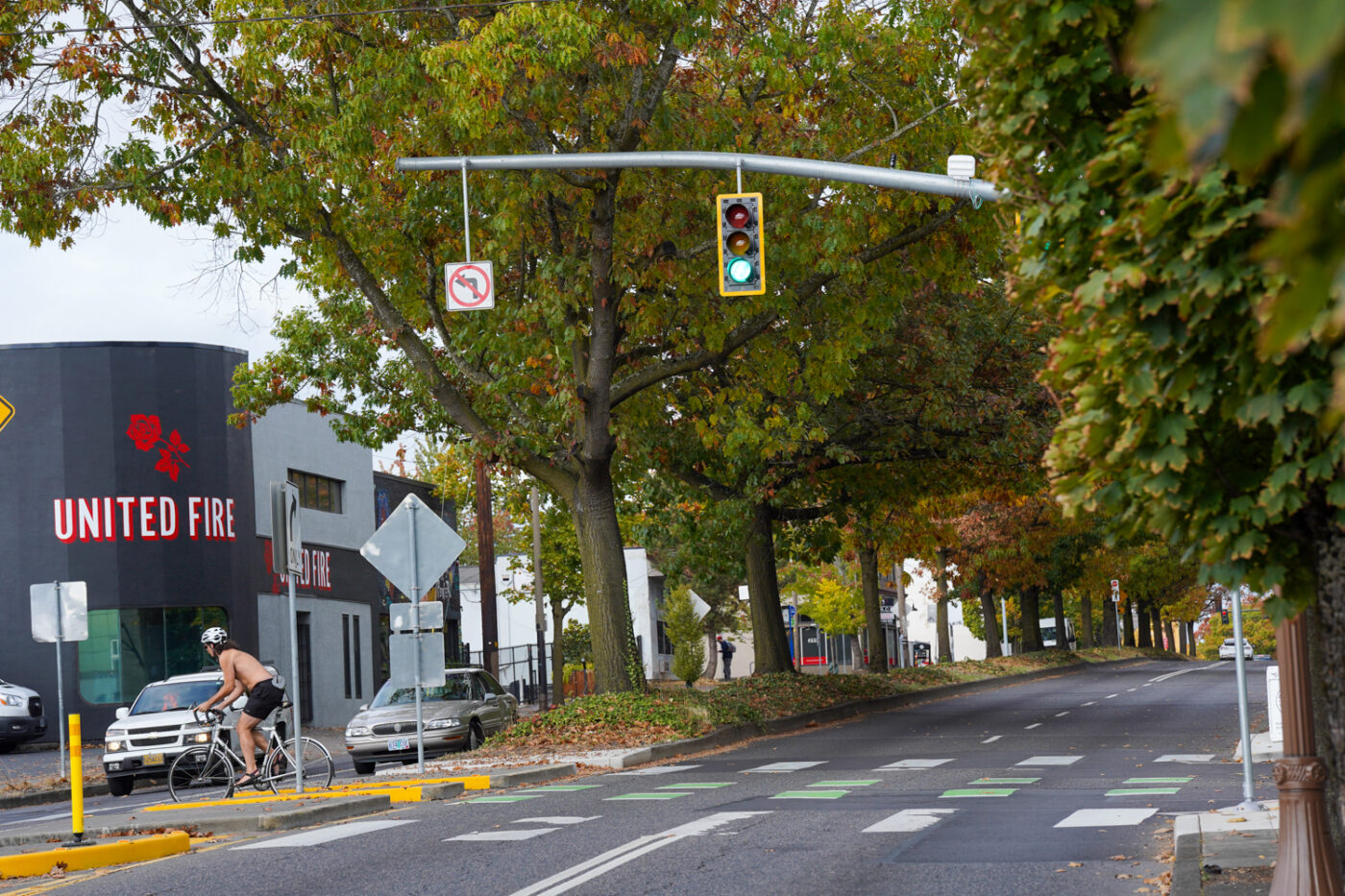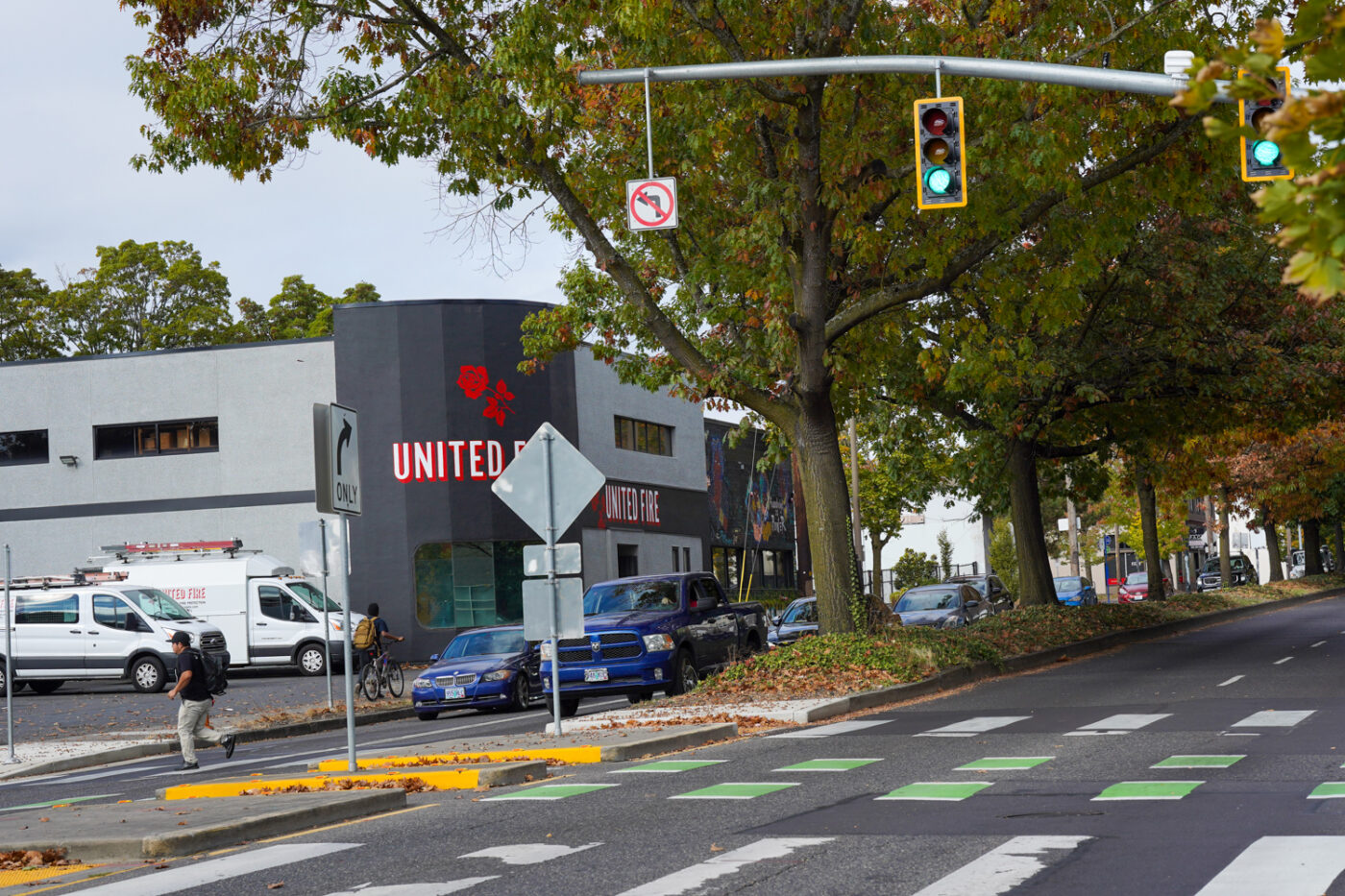
A new traffic signal on North Going Street at its crossing of Martin Luther Junior Boulevard finally went live last week. Portlanders first identified a need for the signal in 2017 as part of a batch of crossings to make getting to nearby schools safer and funding for it was adopted by Portland City Council in 2020.
NE Going is one of Portland’s most heavily used neighborhood greenways — which are streets that prioritize biking and aim to be low-stress and family friendly. This signal was highly anticipated because Going is such a key east-west bikeway and the state-owned MLK Jr. Blvd is four lanes of relatively high speed traffic. PBOT installed median islands in 2010 to make the crossing safer, but it remained stressful. In 2012 we shared an article by noted local lawyer Ray Thomas who called this crossing an excellent example of an “ambiguous intersection” where crossing behaviors can be unpredictable by both drivers and bikers.
Unfortunately, based on my observations yesterday, it doesn’t appear like the new signal will be as effective as many folks hoped. The problem is that the Portland Bureau of Transportation opted for a “beg button” instead of automatic sensor detection of bicycle riders. A person who wants to cross must push a button to make the signal function.


There are two buttons on each corner — one for people using the sidewalk, and the other for people biking in the street. The sidewalk button works well because it’s placed right where walkers typically wait to cross. But the bike button is placed about 10-15 feet behind where most bicycle riders wait at the intersection. This means the vast majority of them don’t see it and don’t use it. Once the button is pressed, it takes about 30 seconds for the light to turn green for NE Going traffic. So not only do you have to push it, the wait felt longer than other new bike signals in town (like the northern landing of the Blumenauer Bridge) that use automatic sensor detection.
The result? Most people biking across this intersection do so while drivers on MLK Jr. Blvd have a green light. I find that inherently problematic. This means So in some ways, the intersection is more dangerous because drivers now have the legal right-of-way when a bicycle rider is in front of them on a green signal, whereas before — when there was no signal — they were legally required to stop if a bicycle rider was already crossing. There are still too many unpredictable behaviors and close calls at this location. Keep in mind this is what PBOT calls a “half signal” where the major road (MLK) has a full red/yellow/green signal, but the minor road (Going) has no signal. That means bike riders don’t have to push the button and can legally cross after yielding when there’s a break in traffic. In a perfect world, this would all work out. But what we see in practice are some bike riders not making safe decisions and MLK users who see a green light and assume they have the right-of-way regardless of whether or not a bike rider has already established themselves in the intersection.
Note the people crossing against the signal in the four photos below. I’ve got more interactions recorded on video that I’ll share later today.




To see this after we waited four years for the signal was a bit disappointing.
PBOT Communications Director Hannah Schafer told BikePortland that the decision to use a beg button for this signal was a matter of dollars and cents. “The NE Going/MLK signal is part of a bundle of seven different signals that started off very low on funding and then was sent to bid twice before construction to meet our budget,” Schafer wrote in an email. “Unfortunately, this meant keeping the project as bare bones as possible, which meant not adding detection/bike signal heads into this design which would have added to the cost.”
That’s the bad news. But the good news, Schafer says, is that now that the signal is up and running and all the electrical bits are in place, it “would not be a major lift” to retrofit this intersection with detection down the road if/when funding is identified. Asked if the project is 100% complete and whether new pavement markings to encourage riders to push the button might still be coming, Schafer couldn’t say for sure at this time.
The full project (including six other signals) isn’t complete, so there might be room to add pavement markings in the future when the city goes through their final list of tasks. In the meantime, hopefully more folks push the button and no one gets hit.
Have you used this signal yet? What do you think about the change so far?
UPDATE, 10/16 at 10:02 am: I learned in a comment below from Ted Buehler (someone I know in real life and who’s knowledge I respect) that since this is a “half signal” — where only the traffic on MLK has a signal and Going just has the “Walk/Don’t Walk” sign — bike riders on Going can treat this like a de facto stop sign. That means if you don’t want to push the button and wait for MLK traffic to get a red signal, you can just roll up, yield, and then go if there’s a safe break in traffic. Learn more on why and where PBOT uses half signals here.



